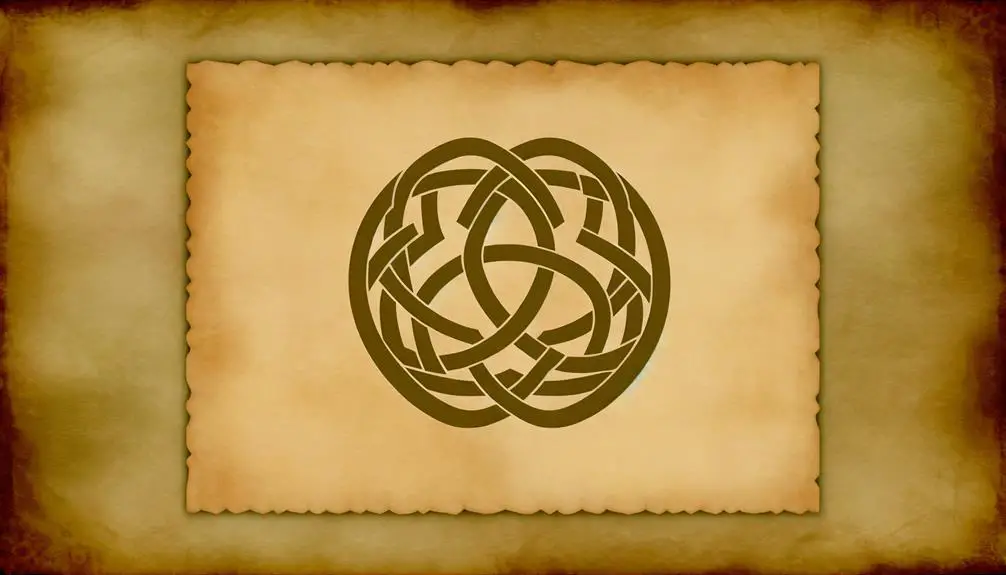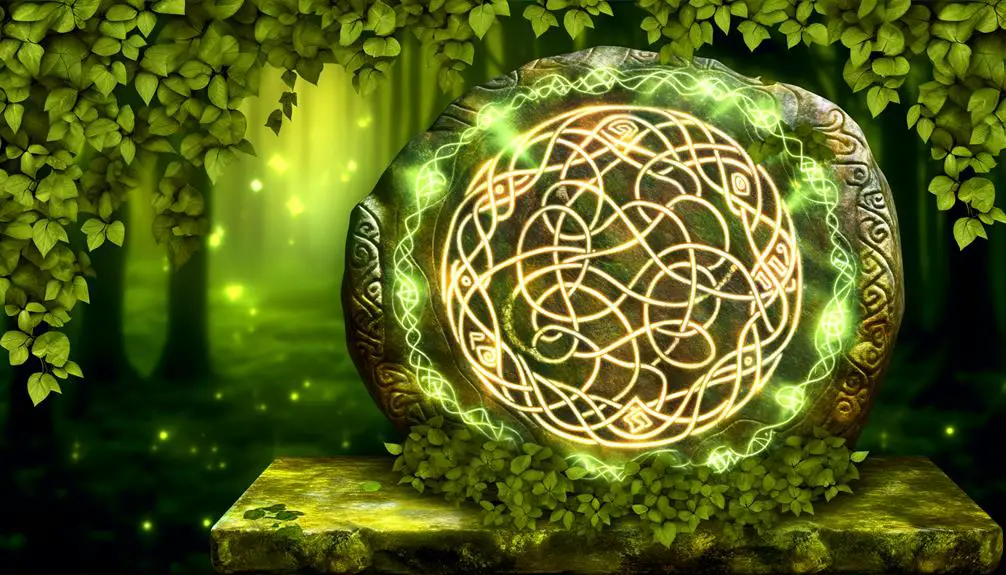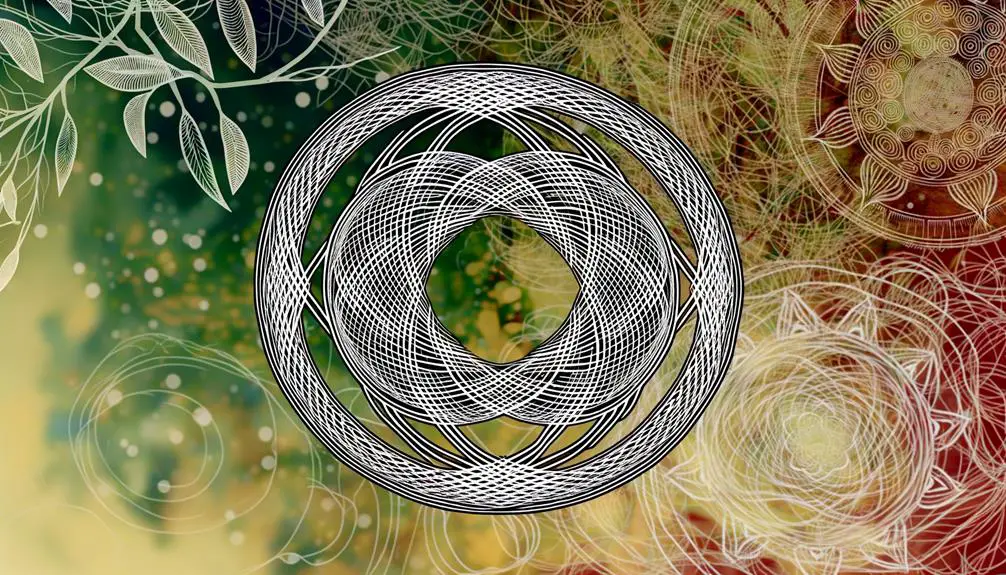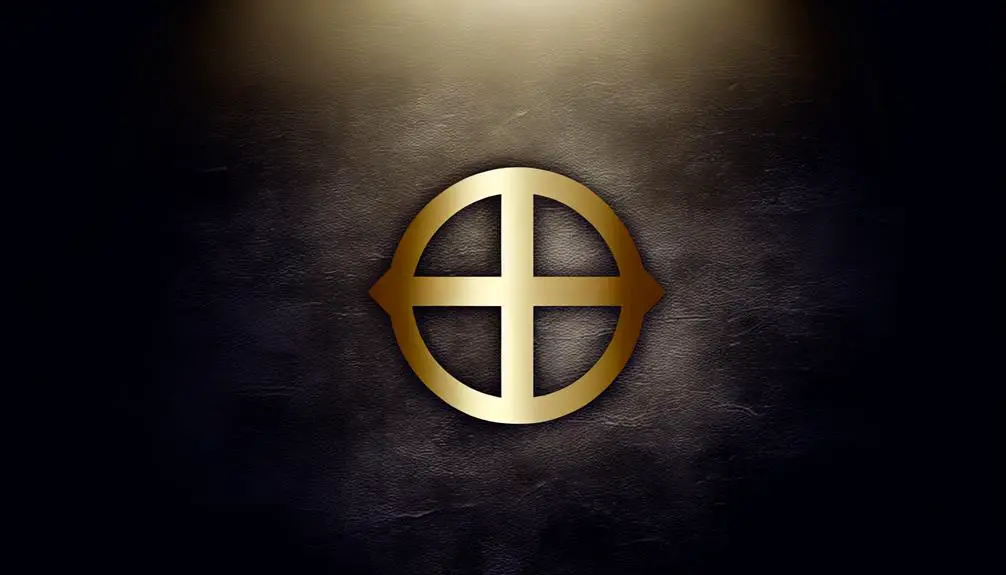What Is the Meaning of the Path of Life Symbol?
The Path of Life symbol, with origins in ancient Mesopotamia, Egypt, Greece, and Rome, embodies continuity and spiritual interconnectedness. Often depicted in sacred and religious art, it portrays humanity's quest for understanding.
The symbol encourages introspection and appreciation for life's journey, evoking themes of hope, resilience, and transcendence. In Native American traditions, Celtic art, and Eastern philosophies, it highlights interconnectedness and the weave of destiny.
Modern usage spans art, spirituality, and psychology, symbolizing growth, transformation, and shared human experience. Exploring its profound cultural and personal significance provides deeper insights into living a meaningful life.

Key Takeaways
- The Path of Life symbol represents the journey and interconnectedness of life.
- It embodies themes of continuity, spiritual interconnectedness, and personal growth.
- The symbol encourages introspection and appreciating life's experiences.
- It serves as a metaphor for resilience, wisdom, and self-discovery.
- Modern usage spans art, spirituality, and psychology, emphasizing transformation and unity.
Historical Origins

The historical origins of the Path of Life symbol can be traced back to ancient civilizations, where it was often depicted in sacred art and religious artifacts. In Mesopotamia, intricate carvings on temple walls showcased this emblem, signifying the interconnection of life, death, and the cosmos.
Similarly, in ancient Egypt, the symbol appeared in hieroglyphics and tomb paintings, representing the eternal journey of the soul through the afterlife. The Greeks and Romans also adopted it, integrating the motif into their mosaics and coinage, reflecting philosophical and metaphysical beliefs.
Such widespread usage underscores its foundational role in early human attempts to understand existence and the cycles of birth and rebirth, anchoring the symbol deeply in the annals of history.
Cultural Significance
Building upon its rich historical origins, the Path of Life symbol holds profound cultural significance across various societies, embodying themes of continuity, spiritual interconnectedness, and the pursuit of enlightenment.
In Native American traditions, this symbol is often depicted in intricate art and serves as a representation of the cyclical nature of life and death, encapsulating the belief in an eternal spiritual journey.
Similarly, in Celtic culture, it illustrates the intricate weave of destiny, life choices, and spiritual progression.
In Eastern philosophies, it conveys the interconnectedness of all beings, aligning with principles of karma and reincarnation.
Consequently, the Path of Life symbol transcends cultural boundaries, offering a universal portrayal of humanity's quest for understanding and harmony within the cosmic order.
Symbolic Interpretations

Symbolic interpretations of the Path of Life symbol explore its multifaceted representations, revealing insights into human existence, spiritual growth, and the interconnectedness of all life forms. This symbol, often depicted as an intricate intertwining of lines or paths, serves as a metaphor for the journey one undertakes in life. It encourages introspection and appreciation of the experiences that shape an individual's existence. The Path of Life symbol resonates deeply, evoking emotions and thoughts such as:
- Hope: Illuminating the belief in a purposeful journey.
- Resilience: Highlighting the strength to navigate life's complexities.
- Unity: Emphasizing the interconnectedness of all beings.
- Transcendence: Inspiring spiritual elevation and enlightenment.
These interpretations offer profound insights into the essence of living a meaningful life.
Personal Growth
Drawing from the symbolic interpretations of the Path of Life, personal growth emerges as a key theme, emphasizing the transformative journey of self-discovery and continuous improvement. This ancient symbol accentuates the significance of evolving through life's experiences, fostering resilience, wisdom, and inner strength. The Path of Life serves as a metaphorical map guiding individuals through the complexities of existence, encouraging a deeper understanding of oneself and one's purpose.
| Aspect | Description |
|---|---|
| Self-Discovery | Revealing true self through introspection and reflection. |
| Resilience | Building strength to overcome life's challenges. |
| Wisdom | Gaining insight from varied life experiences. |
| Purpose | Finding and pursuing meaningful goals. |
Modern Usage

In contemporary settings, the Path of Life symbol has been embraced across various domains, including art, spirituality, and psychology, reflecting its enduring relevance and multifaceted applications. This ancient symbol continues to inspire and evoke profound emotional responses through its representation of life's journey and interconnectedness.
- Art: Artists integrate the Path of Life into their work, creating pieces that resonate with themes of growth and transformation.
- Spirituality: Many spiritual practices employ the symbol as a meditative tool, guiding individuals toward enlightenment and inner peace.
- Psychology: Therapists use the symbol to help clients visualize their personal development and navigate life's complexities.
- Community: It fosters a sense of unity and shared human experience, reminding us of our interconnected paths.
These modern utilizations underscore the symbol's rich, evolving significance.
Conclusion
The path of life symbol, with its historical origins steeped in ancient traditions and cultural significance spanning diverse societies, embodies a complex tapestry of meanings.
While it serves as a beacon for personal growth and introspection, its modern usage juxtaposes ancient wisdom with contemporary quests for identity and purpose.
This duality enriches the symbol, inviting continuous reinterpretation and scholarly inquiry, thereby bridging the timeless human journey with present-day existential explorations.





